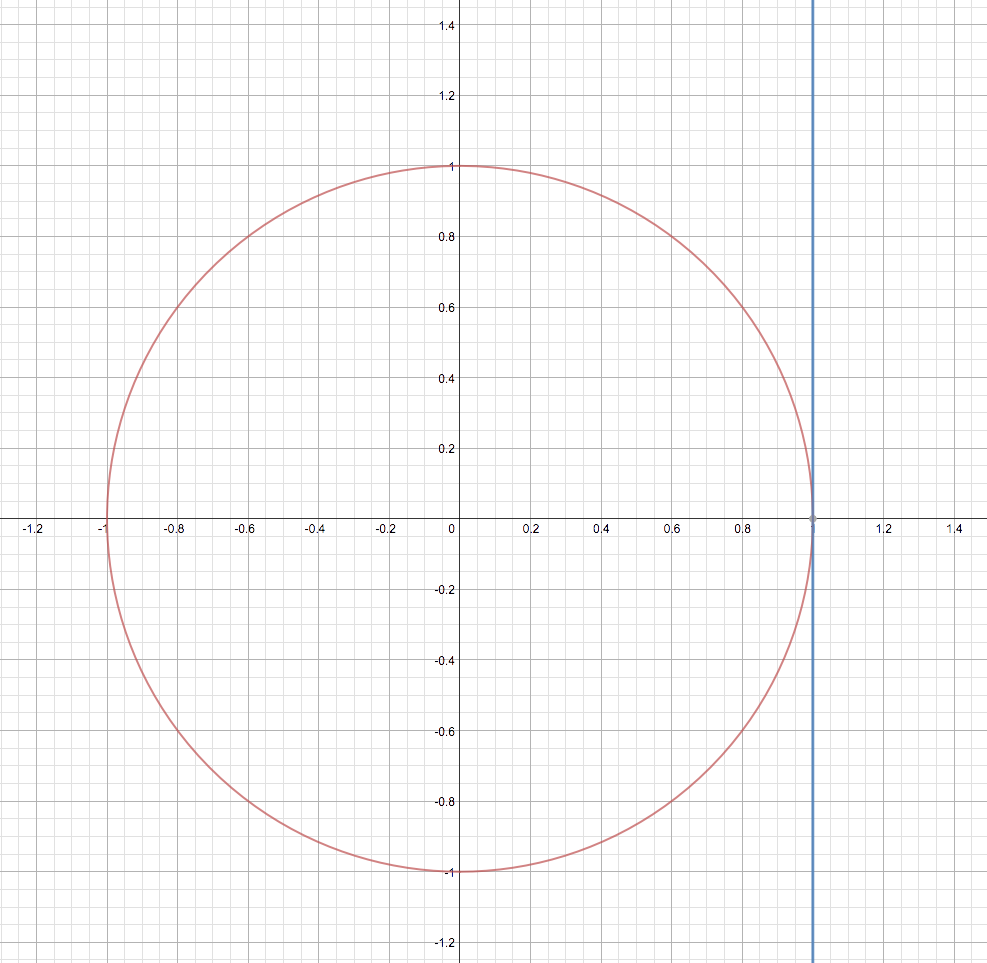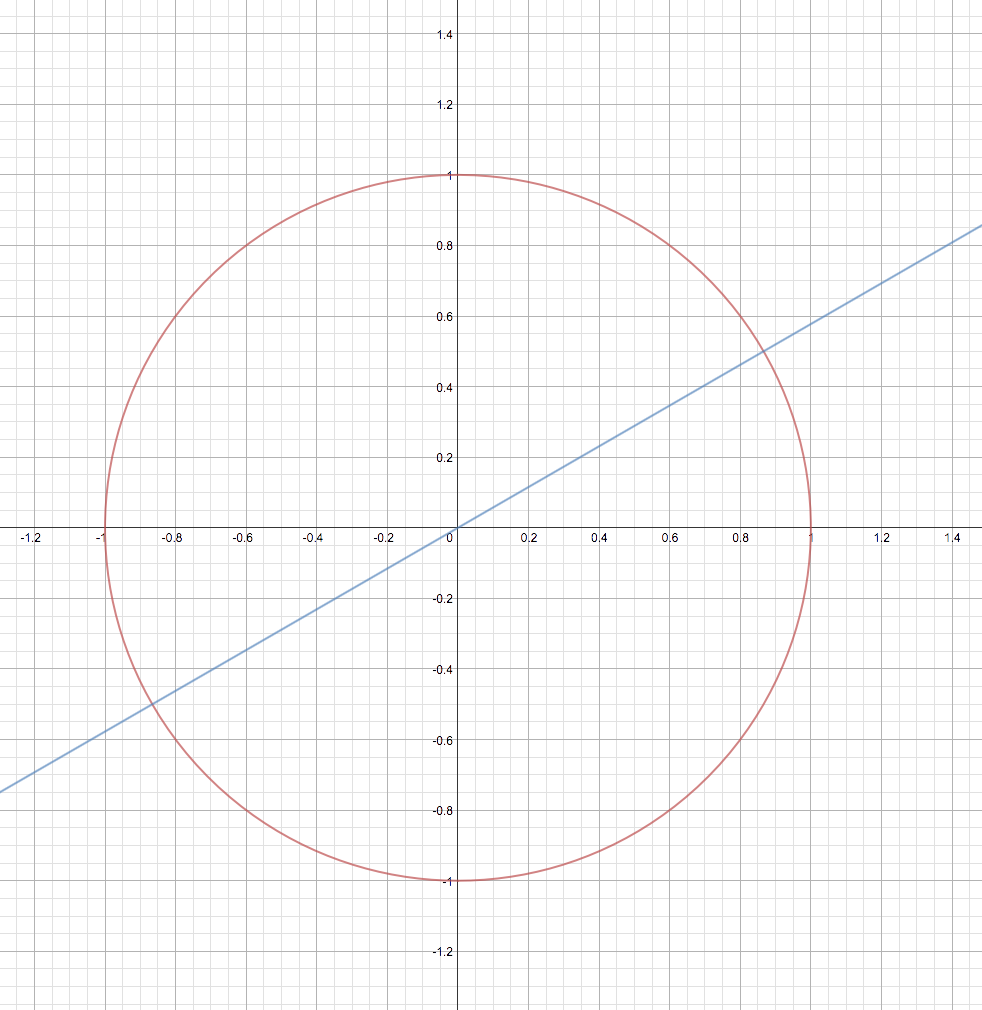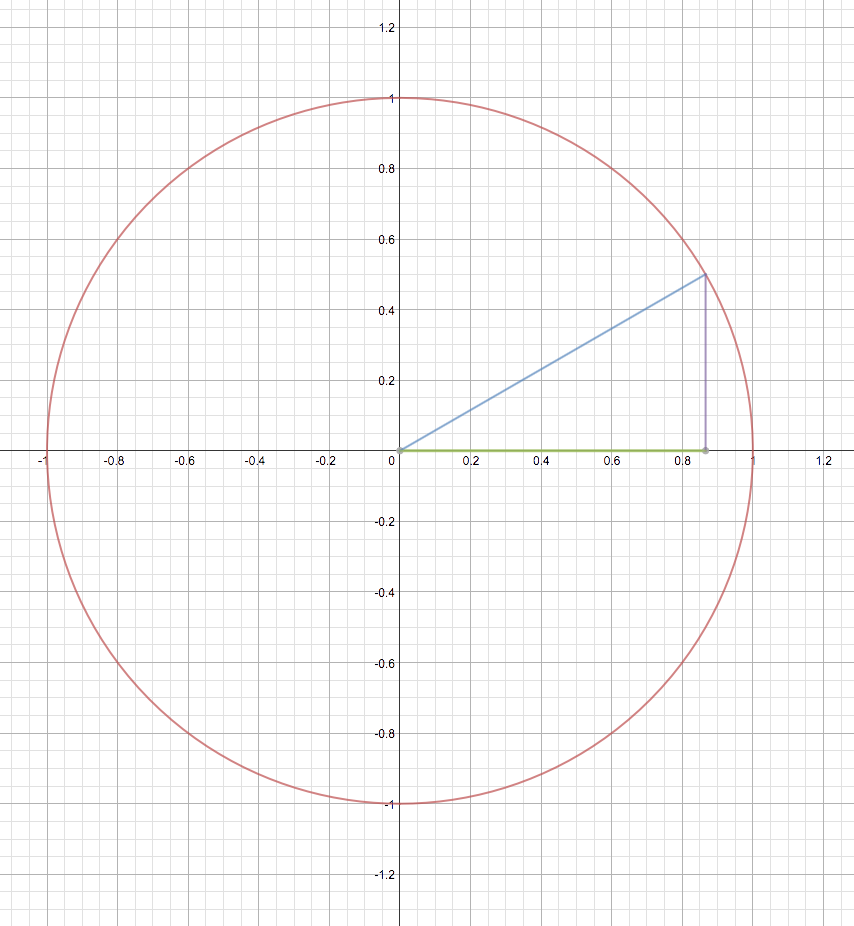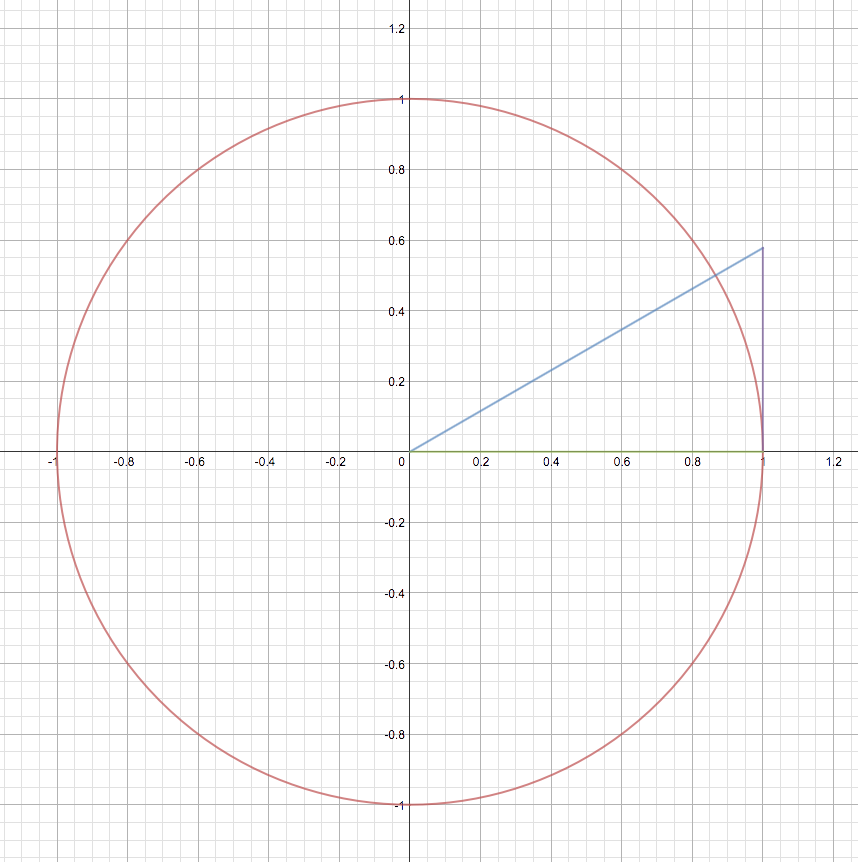Question #6dcf7
1 Answer
The short answer is yes. In fact, they're identical .
It helps to know that in Latin, tangent means "touch." In Geometry, you learned that a tangent barely touches a circle, intersecting the circle at exactly one point.

It also helps to know that in Latin, secant means "sever." Which makes sense since a secant line slices through a circle.

Now let's look at the relationships between the sides of a right triangle when that triangle is drawn in Quadrant I of the Unit Circle.

The purple segment is the opposite side of the standard angle, the green segment is the adjacent side of the standard angle, and the blue segment is the hypotenuse. Now, since the hypotenuse is also a radius of the Unit Circle, it has a length equal to exactly 1.
So on this triangle,
Now we can also draw a different triangle in Quadrant 1.

On this larger triangle, the adjacent side (green segment) has a length of 1. Let's look at the other segments.
Also, on this triangle:
So the value of the secant of an angle can be determined by measuring the length of a segment that behaves like a secant line from Geometry. And the tangent of an angle can be determined by measuring a segment that behaves like a tangent line from Geometry.
Hope this helps.

